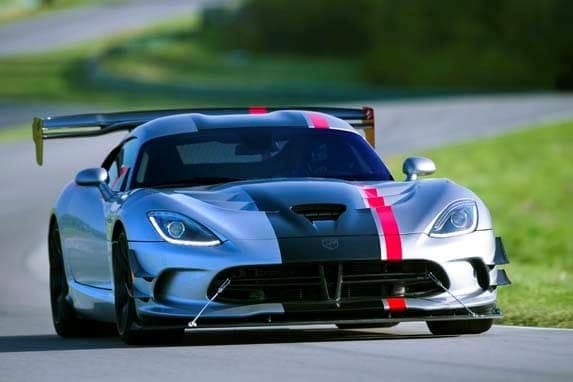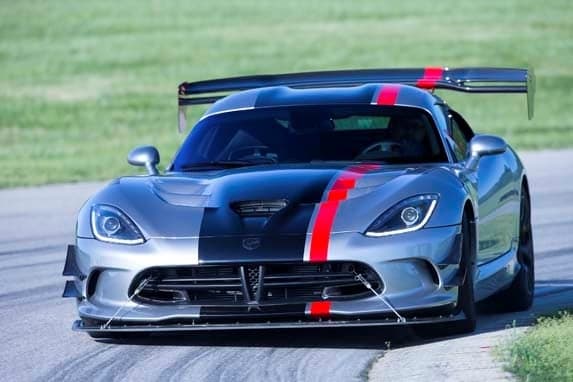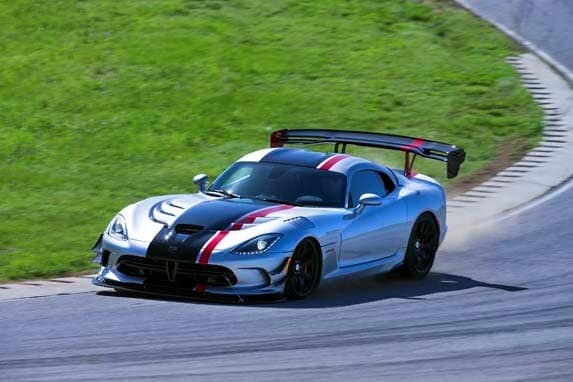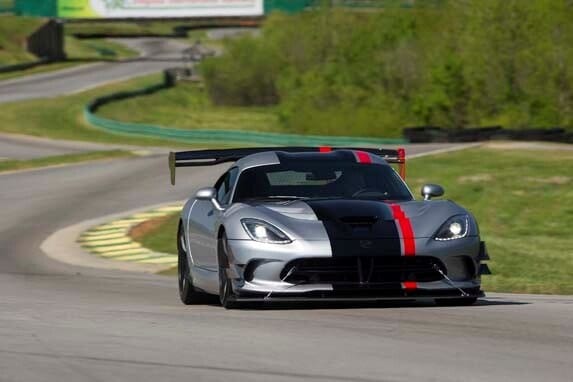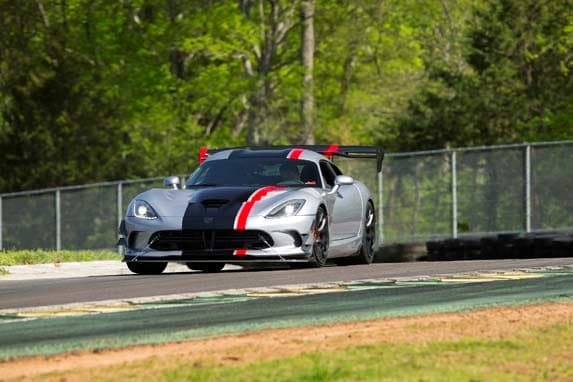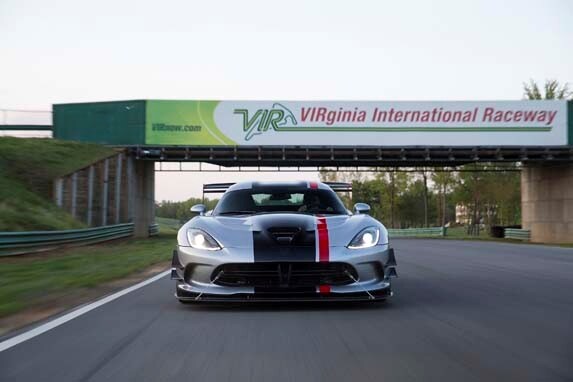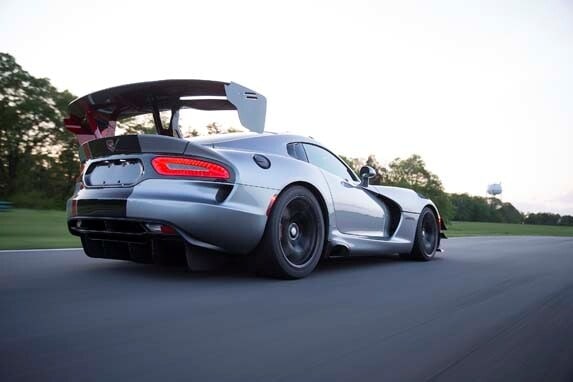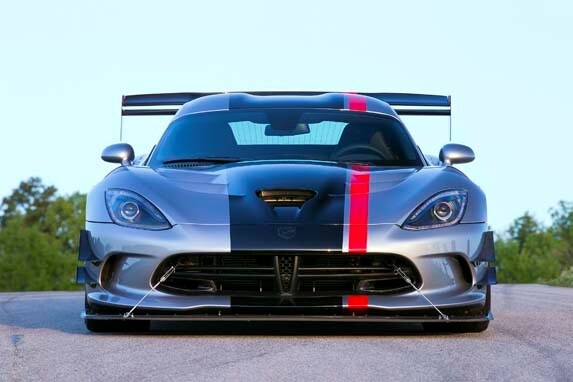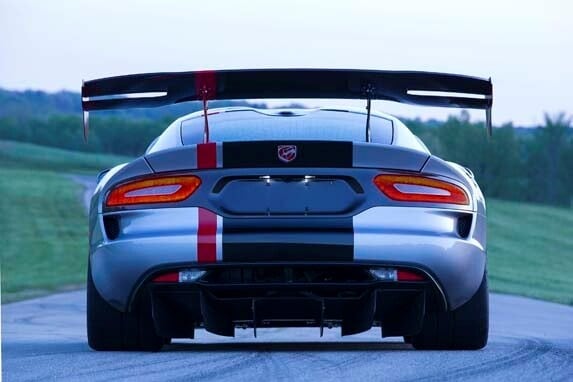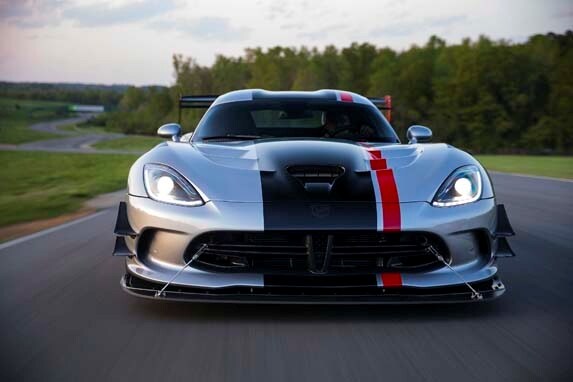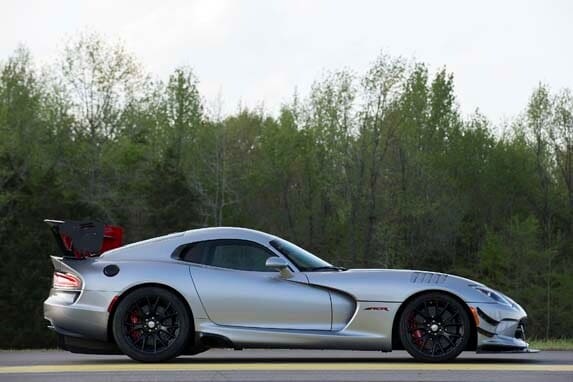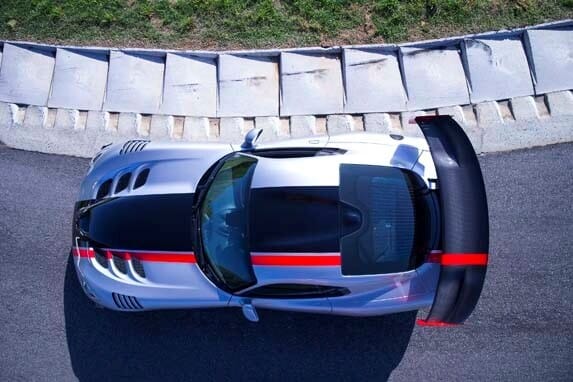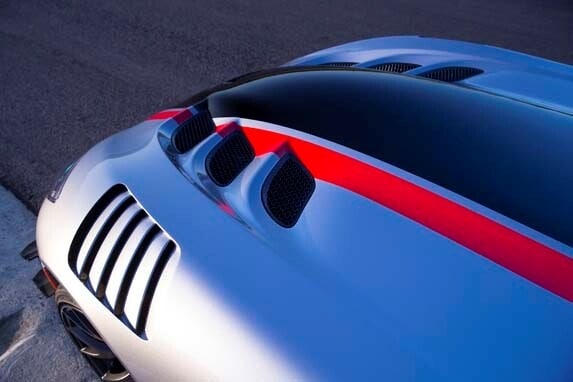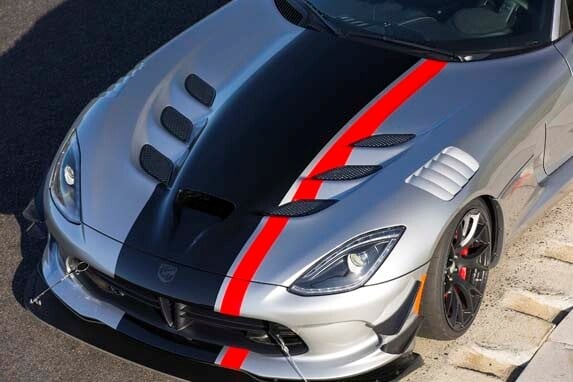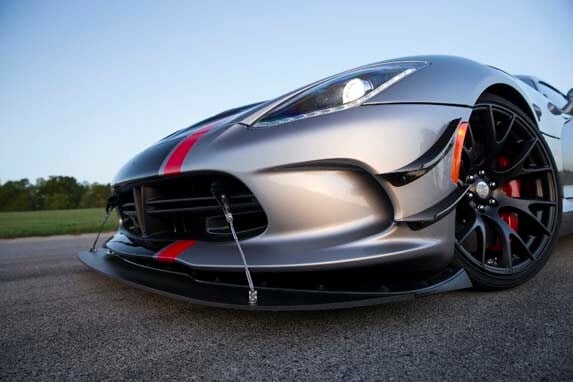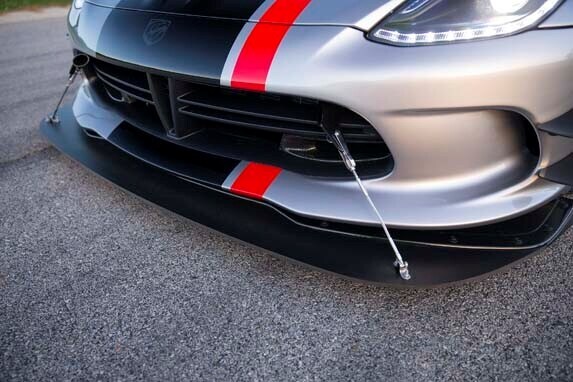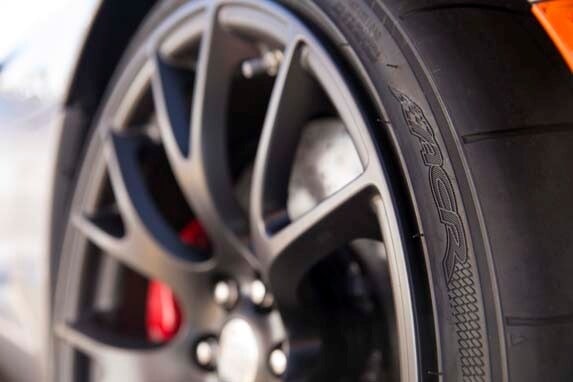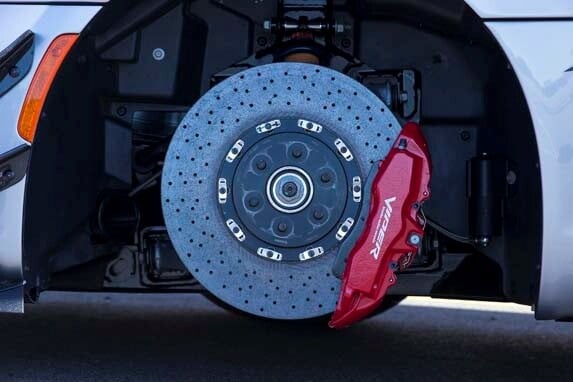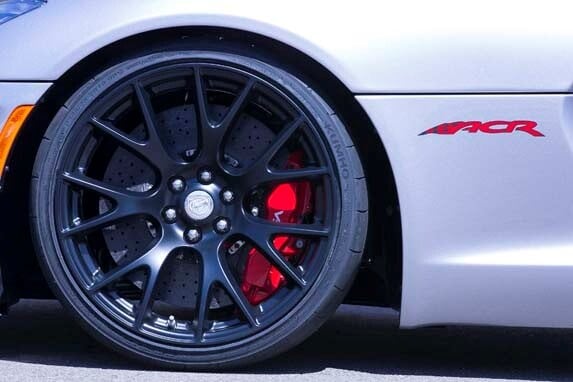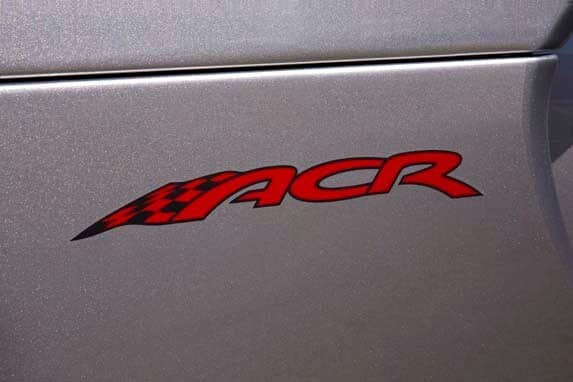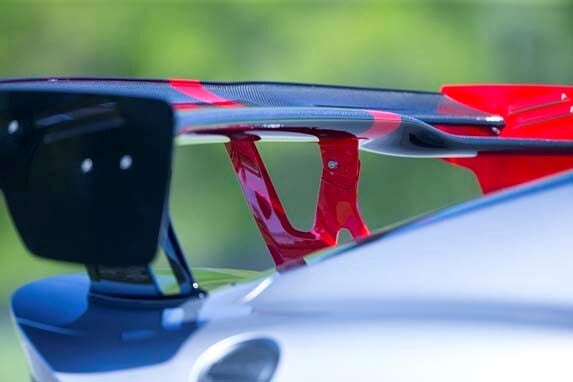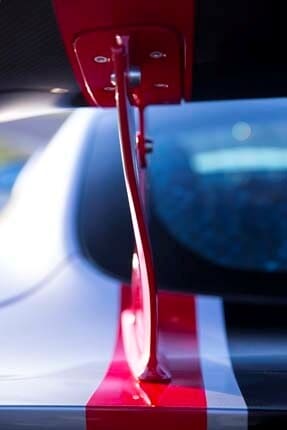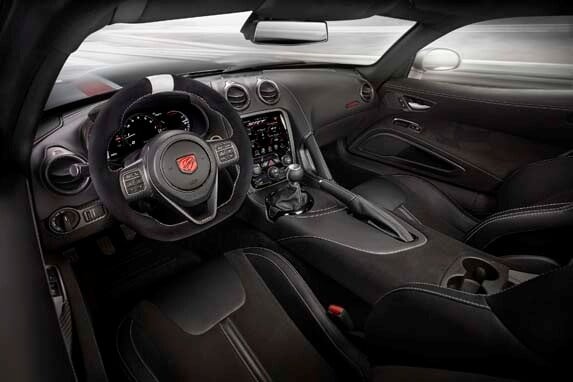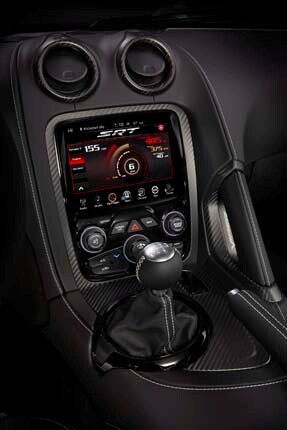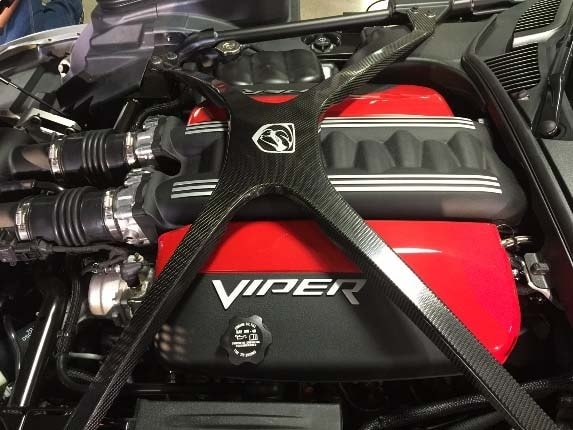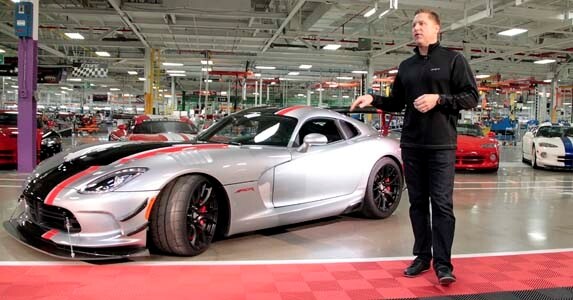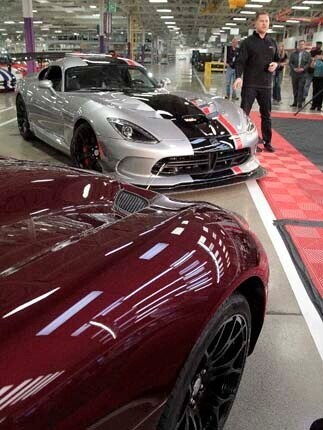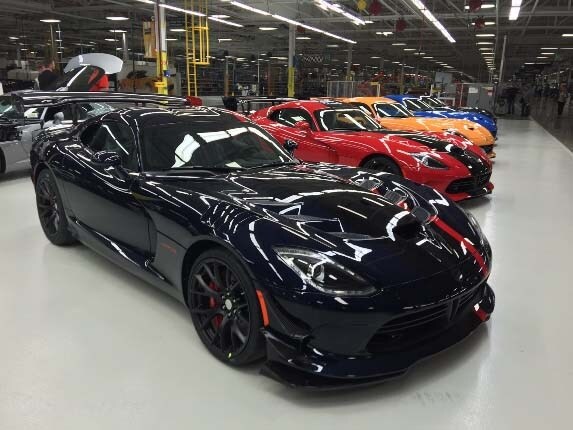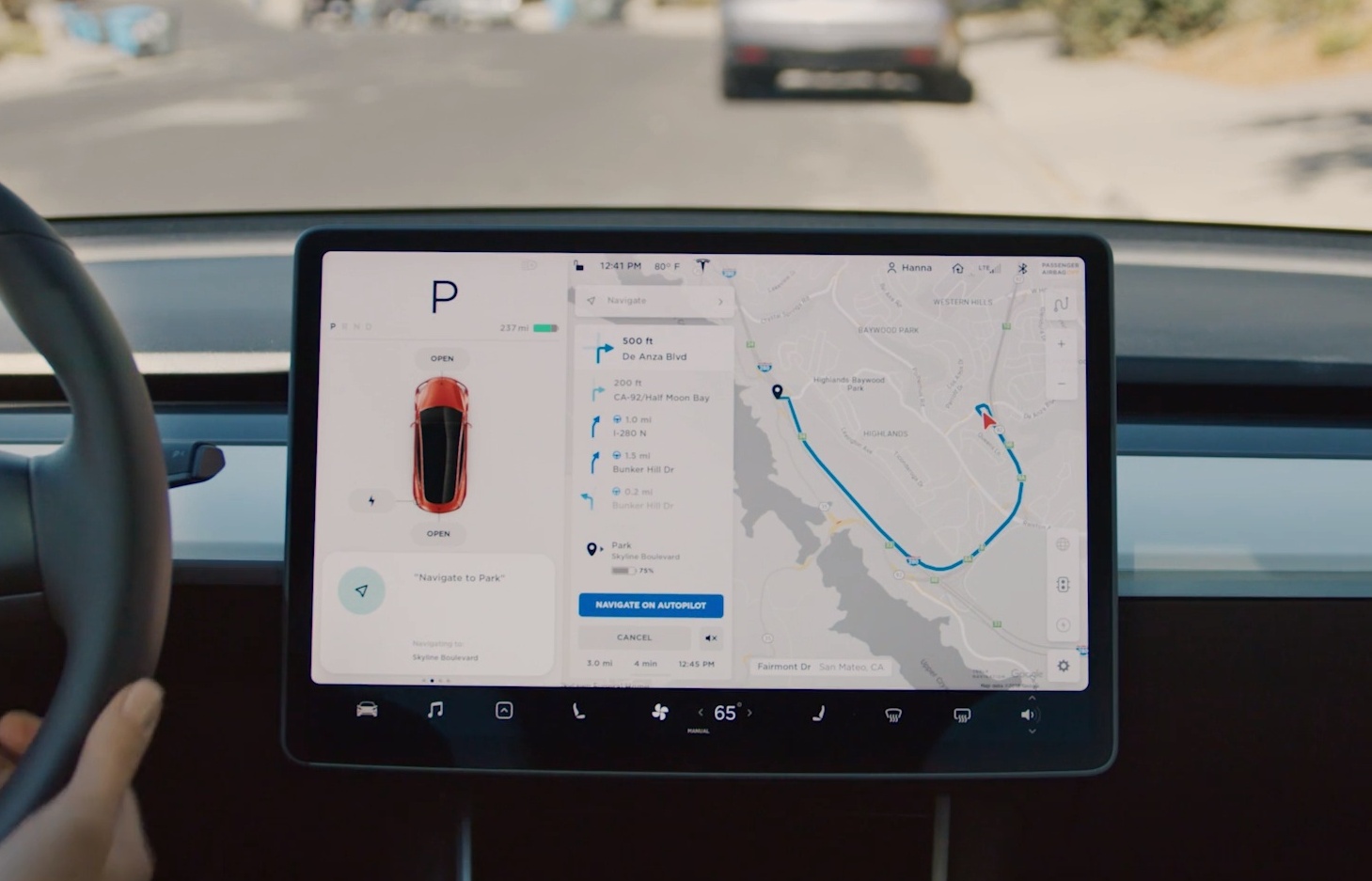Just five years ago, Chrysler closed the doors on its Conner Avenue plant in Detroit, and the Dodge Viper was apparently consigned to history. The requiem included lamentations for the Viper ACR, the super track star of the lineup.
The 2012 resuscitation of the Conner Avenue plant and resurrection of the Viper (generation V) prove that appearances can be deceiving. And as an exclamation point, on May 8, Dodge unveiled the renewal of the ACR (American Club Racing) option, offered in two levels, standard and Extreme Aero, the baddest Viper yet.
Like the earlier ACR, the elements that set the super Vipers apart from their merely torrid stablemates are aerodynamics, braking, and handling.
Improving downforce
The aero emphasis is all on improving downforce, to give the Viper more grip in high speed cornering. According to Tim Kuniskis, president and CEO of Dodge and the SRT (Street and Racing Technology) brand, the elements of the Extreme Aero package add up to almost 2000 pounds of downforce at high speed, double that generated by the previous ACR, and the key to sustainable cornering capabilities of 1.5 g-extreme indeed for a street legal car.
Both versions of the ACR sport unique front splitters, underbody enhancements, rear diffusers, and big rear wings. But the Extreme Aero upgrades are more, yes, extreme. For example, the front splitter includes detachable extensions, with four dive planes-detachable to keep them from scraping on curbs and driveways during street driving. This also goes for the detachable strakes of the carbon fiber diffuser at the rear.
Also: Class of 2016 — New Cars Ready to Roll
The adjustable dual plane carbon fiber rear wing is a little bigger than that of the basic (if basic has any relevance for this car) Viper ACR, and there are louvers in the front fenders to reduce pressure in the wheel wells.
Downforce is only one element in the handling equation. The latest ACR has higher chassis rigidity of the previous generation, according to Dodge, the spring rates are significantly higher than the standard Viper, and the coil-over suspension-with spring rates twice as high as the recent TA (Track Attack) version-includes double-adjustable Bilstein racing shock absorbers with 10 settings that allow the driver to fine tune the corner weights.
The fastest street legal Viper track car ever
A set of low-profile Kumho performance tires-295/25 front, 335/30 rear-on 19 x 11-inch forged alloy wheels translate downforce into grip, and also exploit the formidable power of the Brembo carbon ceramic brake package: 15.4-inch two-piece rotors front, 14.2-inch two-piece rear, with six-piston calipers front, four-piston rears.
Output of the ACR’s 8.4-liter V10-645 horsepower, 600 pound-feet of torque-is unchanged from standard Viper tune. While this is well short of the 707 horsepower and 650 pound-feet churned up by Dodge’s 6.2-liter supercharged Hellcat V8, Tuniskis points out that the Viper ACR has a vast edge in power-to-weight. With its high percentage of aluminum, carbon fiber, and even magnesium, the Viper ACR should weigh in at less than 3500 pounds, whereas the cars offering the Hellcat option-Challenger and Charger-are in the vicinity of 4500 pounds.
Tuniskis calls the latest ACR "the fastest street legal Viper track car ever," an assertion the SRT team may be tempted to test on Germany’s ultra-demanding Nurburgring race circuit. After all, according to Tuniskis the previous generation Viper ACR still holds the fifth fastest Nurburgring production car lap time.
With sales slated to begin in the third quarter of 2015, Tuniskis wasn’t ready to discuss pricing for the basic ACR or the Aero Extreme version. The MSRP for the 2014 Viper TS was just over $120,000, but Dodge trimmed pricing of Viper models by $15,000 for 2015.
As a hand-built supercar, the Viper ACR is a low volume item that the company is happy to build to buyer specs, including a choice from a color palette that includes 8008 options. With so many choices to consider, the time to start is now, pricing or no pricing.
